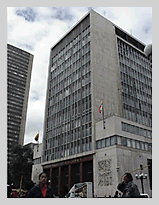Background

After several attempts, in June of 1880, the Government created the Banco Nacional to act as its banker and to promote public credit. Its role as banker consisted of providing the Government with services of allocation of public or Treasury funds, credit extension, collaboration in obtaining both internal and external loans as well as the management of Government Securities. Furthermore, the Banco Nacional was responsible for issuing the national currency. However, in 1894, the Congress liquidated the National Bank due to registered excesses in the currency issue. Years later, the Banco Central de Colombia was created, which functioned between 1905 and 1909, until it too was liquidated for the same reasons.































































